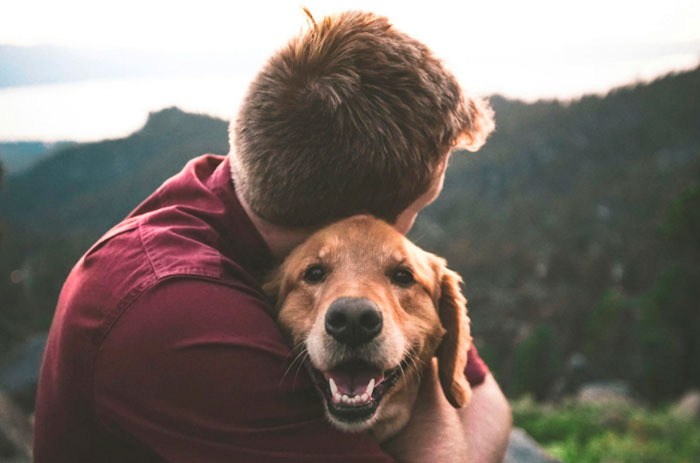Across the U.S., countless dogs find themselves in shelters each year, not because of behavior issues, but due to life circumstances beyond their control—housing instability, financial hardship, or the passing of an owner. Despite the efforts of shelters and rescue organizations, overcrowding and limited resources lead to heartbreaking outcomes. Yet amid these challenges, rescue work offers hope.

From devoted foster caregivers to committed adopters, people are stepping up to provide second chances to animals in need. Rescue dogs, often misunderstood, can become loving and loyal companions, offering emotional rewards that go far beyond expectations. By adopting, fostering, or simply spreading awareness, Evan Byron demonstrates how individuals can become part of a compassionate movement that is changing canine and human lives.
Shelter Dogs in the U.S.
Each year in the U.S., millions of dogs enter shelters through no fault of their own. Many are surrendered due to housing issues, financial strain, or changes in their owners’ lives, not because of anything the dog did wrong. Shelters often operate beyond capacity, which puts a strain on staff and resources.
When adoption rates can’t keep up with intake, euthanasia becomes a heartbreaking reality. In some areas, dogs have just days before decisions are made based on space, not behavior or health. The emotional toll on shelter workers can be just as devastating, leading to burnout and fatigue. Across the country, rescue organizations and animal advocates work to change this pattern.
Giving Dogs a Second Chance
Offering a second chance means giving dogs the opportunity to experience love, safety, and stability—often for the first time. Many rescued dogs come from neglectful or unstable environments, yet with time, patience, and compassion, they often grow into deeply loyal and affectionate companions.
A once-timid dog that cowered in the back of a kennel can blossom into a confident, tail-wagging friend once placed in a nurturing home. Stories of transformation are common in the rescue world, where dogs previously overlooked due to age or fearfulness go on to thrive in devoted families. Their progress often inspires adopters, creating a bond rooted in trust.
The Role of Rescue Groups and Foster Networks
Rescue organizations act as lifelines for dogs who might otherwise be forgotten. They often work alongside shelters to identify dogs at risk and place them into temporary foster homes where they can decompress from the shelter environment.
Foster networks play a powerful role in shaping a dog’s future. A shy puppy learning to trust humans again or a senior dog recovering from surgery both benefit immensely from the stability and care provided in a foster setting. These volunteers don’t just house dogs—they prepare them emotionally and behaviorally for their forever homes.
Behind every successful adoption is a network of people who’ve invested time, energy, and love. Whether it’s transporting dogs across state lines or simply helping walk them at local events, the collective efforts of volunteers and rescue groups are what make second chances possible.
Benefits of Adopting a Rescue Dog
Rescue dogs often form remarkably strong bonds with their adopters. Many seem to sense they’ve been given a new beginning, and their gratitude shows in the form of loyalty and affection that can be deeply moving.
Choosing adoption over buying from a breeder can also be more economical. Adoption fees typically cover spaying or neutering, vaccinations, and microchipping—services that add up quickly when purchased separately. Beyond cost, adopters get the satisfaction of knowing they’ve made room for another dog to be saved.
Common Misconceptions
Many people hesitate to adopt because they believe rescue dogs are damaged or poorly behaved. This misunderstanding keeps great dogs from finding homes. In reality, most shelter dogs end up there due to circumstances beyond their control, not because they’re flawed.
It’s also a myth that rescue dogs are always old or sick. Puppies, purebreds, and healthy, active dogs of every size and breed regularly enter shelters. Some have even had basic training, making the transition into a new home smoother than expected. Breed-specific rescues also help match adopters to their preferred dog type.
Ways to Make a Difference in the Rescue Community
You don’t need to adopt to be part of the solution. Fostering a dog, even for a short time, creates space in shelters and gives animals a better chance to adjust to home life. Some fosters specialize in seniors or dogs recovering from surgery, while others simply offer a temporary haven until adoption.
Spreading the word about adoptable dogs through social media or sharing success stories with friends can also make an impact. A single post can lead to an adoption that changes a dog’s life forever. Advocacy becomes powerful when communities come together with a shared goal.
Supporting local legislation that improves shelter conditions or funds spay/neuter programs helps tackle the issue at its root. Every small action—whether it’s volunteering at an event or donating supplies—contributes to a larger movement of compassion and change. With enough collective effort, the cycle can be broken.
